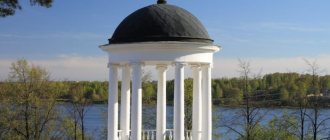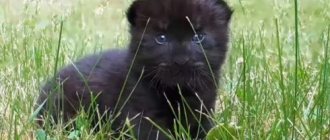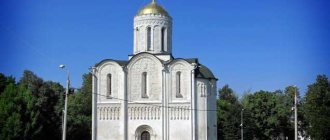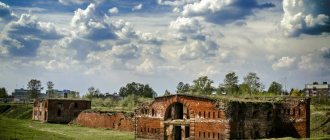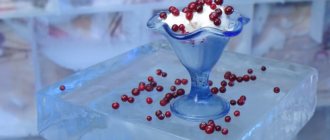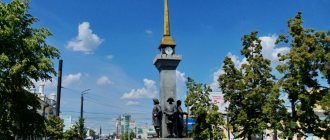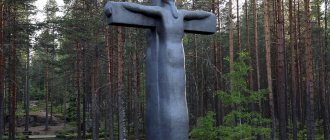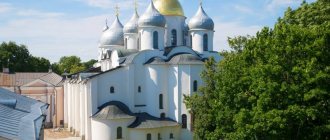| What to see in 1 day on your own Route Museums of Kostroma in 1 day Stories, routes and tips from tourists with photos Where to stay in Kostroma Sightseeing tours Excursions from Kostroma for 1 day |
Kostroma, the city of the Golden Ring, founded by Yuri Dolgoruky, has a rich history and provincial charm. The hometown of Ivan Susanin and the place of residence of the Snow Maiden, Kostroma is filled with fabulous and very real stories that took place in the Russian state. The architecture of the city and the Volga landscapes make Kostroma a place for pleasant leisurely walks.
The city is often chosen as a day trip destination. The journey from Moscow takes from 4 hours by car to 6–7 hours by train. Other regional centers are also located nearby - Yaroslavl (from 1.5 hours), Ivanovo (from 1.5 hours), Nizhny Novgorod (from 5 hours). The journey from St. Petersburg will take from 11 hours. It’s quite possible to see the main attractions of Kostroma in 1 day. But the walk will be intense - be prepared to walk a lot!
Ostrovsky Drama Theater Photo: © Eduard Skvortsov
What to see in 1 day on your own
Kostroma is a fairly compact city, most of the attractions are located in the center. On your own, in 1 day you will have time to see top tourist sites; the main thing is to follow a pre-prepared route. Plan your walk by the hour and you won't miss any important sights.
Susaninskaya Square
The central square of Kostroma , located on the high bank of the Volga, was formed at the end of the 18th century. Before that, on the site of the square there was a craftsmen's estate, the buildings of which were destroyed in a fire. The square is shaped like a fan - 9 streets radiate from it in 3 directions. According to legend, Catherine the Second, while approving the development plan, dropped her fan, which forced the architect to change the concept of the ensemble. The northern part of the square is semicircular, and from the southern part to the Volga there is a descent resembling the handle of a fan.
Initially, the square was called Ekaterinoslavskaya, but in 1835 it was renamed Susaninskaya. In 1851, a monument to the legendary Kostroma resident appeared on the square. The original monument was destroyed during Soviet times. Now on the square there is a monument made in 1967. Susanin stands facing the Volga, greeting ships arriving in the city. In the northern part, the square is surrounded by important historical buildings of the city: a guardhouse and a tower , a hotel, Borschov's house , the side facade of the Government Places . The central part of Susaninskaya Square is bordered by former shopping arcades: Red Rows of Gostiny Dvor and Big Flour Rows .
Susaninskaya Square Photo: © Eduard Skvortsov
Borschov's House
The largest estate in Kostroma, the Borshchov House is one of the most remarkable buildings in the vicinity of Susaninskaya Square. The mansion of Lieutenant General and Senator Borschov was originally made of wood. The building acquired its modern appearance in the style of Russian classicism after the death of the owner, when the heirs sold the mansion to the merchant Pervushin. After the city authorities refused to purchase the mansion for premises for the Chambers of Representatives, the merchant established the London Hotel here.
Borschov House Photo: © Alexey Panin
Fire Tower
The unusually beautiful tower is vying for inclusion in the UNESCO World Heritage List. The building was erected after the wooden Kostroma burned 14 times in devastating fires. By order of the governor, the fire tower had to not only control fires in the city, but also fit into the architectural ensemble of Susaninskaya Square. As a result, the building took on the appearance of an ancient temple, above which rises a bell tower (height 35 meters). The fireman on duty, in the event of a fire, would ring a bell and release a colored ball: red if the center of Kostroma was on fire, blue if there was a fire on the outskirts. At night, colored fire was used. Nowadays there is a firefighting museum inside the building.
Fire tower Photo: © Alexey Panin
Guardhouse
Together with the fire tower and Borschov's house, the guardhouse creates the architectural appearance of Susaninskaya Square. The one-story building with columns was built in 1820. It was intended to hold arrested military personnel. Decembrists and members of the People's Will organization were held here. In Soviet times, the building of the guardhouse housed a literary museum, a children's library, a bathhouse, and a bank. Now there is an exhibition inside that introduces visitors to the military history of the city.
Guardhouse building Photo: © Eduard Skvortsov
Shopping arcades
Kostroma has long been a trading city. At the end of the 18th century, the wooden shopping arcades were destroyed by fire. By order of the authorities, new premises for trading shops were built of stone. Merchants' shops, combined into a gallery, were opened in 1793. All shops (one shop - one arch) had a standard plan: a warehouse basement, 1st floor for trade and 2nd floor for an office.
Red rows , located on the right side of the square (when looking at the Volga), were named for the type of goods. Red goods were then called leather, furs, and fabrics. Later, an entire trading city was erected: Large flour rows, Gingerbread, Fish, Vegetable, Kvass, Meat and other rows. The market town had a descent to the Volga, along which goods were delivered to Kostroma.
Shopping arcades Photo: © Eduard Skvortsov
Church of the Savior in Rows
The Church of the Savior is included in the architectural ensemble of the Trading Rows . Like many other buildings in Kostroma, the church was originally wooden. The stone temple was erected in 1766. When they began to build the Trading Rows, it was decided to preserve the church - and this is how the unusual ensemble turned out. At that time, a gate bell tower with a panoramic view of the Volga was added to the church. During the Soviet period, the bell tower was dismantled, but later it was restored. Currently, work is underway to restore the frescoes in the temple.
Church of the Savior in Rows Photo: © Eduard Skvortsov
Kostroma Kremlin
Having gone down from Susaninskaya Square to the Volga, move along 1 May Street towards Central Park . Several centuries ago, here, on the high bank of the Volga, the Kostroma fortress was located. During the reign of Ivan the Terrible, the Assumption Cathedral was erected of the Kostroma Kremlin - the first stone building in the city. The cathedral, unlike other Kremlin buildings, survived the fires, but was dismantled by the Bolsheviks. Nothing remains of the defensive structures to this day except the eastern part of the rampart. Restoration work is currently underway in this area. The construction of the Assumption Cathedral is already underway.
Assumption Cathedral Photo: © Alexey Panin
Central Park
You can relax after a walk in the center of Kostroma in Central Park . In the park there is a monument to Lenin - previously there was supposed to be a monument in honor of the 300th anniversary of the royal house of the Romanovs. By the way, the monument to Lenin stands on a pedestal that was erected for the royal family. The park is divided into 2 zones: for active recreation with sports grounds and for privacy on the banks of the Volga with benches and gazebos.
Monument to Lenin Photo: © Eduard Skvortsov
Assembly of the Nobility
Leaving the park onto Sovetskaya Square , return to Susanin Square. Next, follow Mira Avenue to the Noble Assembly . The white stone mansion can be viewed both from the outside and from the inside. The façade is decorated elegantly and discreetly. Inside there are exhibitions dedicated to the life of the nobility. The exhibitions are complemented by interactive applications, allowing you to fully immerse yourself in the atmosphere of past centuries.
Other buildings on Mira Street are also interesting: the Ostrovsky Drama Theater and the Durygins' estate . The theater building in the style of Russian classicism was built in the mid-19th century and has survived to this day in its original form. The two-story stone mansion of the Durygins complements the architectural appearance of the 19th century street.
Assembly of the nobility Photo: © Alexey Panin
Epiphany-Anastasia Monastery
Turning onto Knyazeva Street and further onto Pyatnitskaya Street, you will come to the Epiphany-Anastasiin Monastery . Founded in the 15th century as a men's monastery, the monastery was later converted into a women's monastery. The main shrine of the monastery is considered to be the Feodorovskaya Icon of the Mother of God - one of the shrines of the Romanov dynasty, the icon is recognized as miraculous.
The architectural ensemble of the monastery includes: the Epiphany Cathedral, built in 1559–1565; Smolensk Chapel; towers of the monastery walls; residential buildings. Since the monastery is active and there is a shelter for orphan girls and an almshouse on its territory, tourists are not allowed to enter. Only the external entrance of the Epiphany Cathedral is open.
Epiphany-Anastasia Monastery Photo: © Alexey Panin
Ipatiev Monastery
The end of the tourist day will take place on the other bank of the Kostroma River, in an area called Ipatievskaya Sloboda. The Holy Trinity Ipatiev Monastery is located here . The exact date of foundation is unknown, it is assumed that it was the end of the 13th century. According to another version - in 1330 by the fugitive Tatar Murza Chet (founder of the Godunov family). According to legend, he was baptized and given the name Zachary. At this place, Zacharias had a vision of the Mother of God.
During the Time of Troubles, there was a battle for the monastery between the Kostroma residents and the Tushino garrison of False Dmitry I. It was here, in the monastery cells, that young Mikhail Romanov lived with his mother. On March 13, 1613, the Zemsky Sobor, sitting in the Ipatiev Monastery, elected Mikhail Romanov as Russian Tsar. The next day, in Trinity Cathedral , Mikhail Romanov was crowned king. Since those times, the Ipatiev Monastery was under the patronage of the royal dynasty. But the adjective “Ipatievsky” ended the reign of the Romanovs - Emperor Nicholas II and his family were shot in the Ipatiev House in Yekaterinburg.
The main attraction of the monastery is the Trinity Cathedral, where Mikhail Romanov assumed the reign. More ancient buildings are the governor's building (XVI century) and the belfry (the first years of the XVII century). The walls and towers of the Old and New Towns (the monastery was divided into 2 parts) were erected in the 16th–17th centuries. Also among the ancient buildings are the chambers of the Romanov boyars (16th century), but they were reconstructed in the 19th century. Now the Ipatiev Monastery has the status of a museum; visiting is paid: 150 rubles. You can visit the monastery churches for free during services.
Ipatiev Monastery Photo: © Eduard Skvortsov
Museum of Wooden Architecture
Near the walls of the Ipatiev Monastery there is a museum “Kostromskaya Sloboda” . A Russian village has been recreated on a cape at the confluence of the Kostroma and Volga rivers. The museum exhibits are real wooden buildings. In the middle of the 20th century, during the creation of reservoirs on the Volga, many settlements were flooded, and the architectural masterpieces of wooden architecture were irretrievably lost. Some of them were brought to one place - to the Ipatiev Monastery. This is how the open-air museum was founded.
The most valuable exhibit is the wooden church of the Cathedral of the Virgin Mary from the village of Kholm. The church was built in 1552 and is the oldest wooden church in the region. The Church of the All-Merciful Savior is notable for its internal carvings and the structure of four cages. The Temple of Elijah the Prophet is unusual in that it consists of two churches: a warm one on the first floor and a cold one on the second. Also in the museum you can see and look inside peasant huts built in the 18th–19th centuries: from a black hut to a timber merchant’s house. Bathhouses on stilts and other domestic buildings are interesting. The museum is open all year round, entrance fee: 150 rubles. for adults and 100 rub. for privileged categories of citizens.
Overview of all the sights of Kostroma
Museum of Wooden Architecture Photo: © Eduard Skvortsov
City `s history
The history of the city of Kostroma begins in 1152, when the first mentions appeared in sources. The founder of the city is Yuri Dolgoruky, the name comes from the word “bonfire”, that is, “fortress”, “fortification”. According to one version, the name may come from ritual games held in honor of Yarila, the sun god.
Kostroma is characterized by a unique fan-shaped layout - the streets depart from the central square, located near the banks of the Volga. But such a layout appeared only in the 18th century after a major fire in 1173. before that, Kostroma was an ordinary cluster of wooden houses, like many other cities. During the fire, almost all wooden buildings burned down and the city began to be rebuilt. The fan plan was approved only in 1779; it was based on the need to solve an important problem - after the fire, some of the buildings remained intact; they were not demolished.
Route
What to see in Kostroma in 1 day? The route should start from the city center - from Susaninskaya Square . After examining the architectural ensemble of the main square of the city, go to the Central Park - to the place where the Kostroma Kremlin . After resting in the park and returning to Susaninskaya Square, move along Mira Street - important architectural objects of the city are located here: the Assembly of the Nobility , the Drama Theater , the Durygins' estate .
The second half of the route of 1 day in Kostroma will look like this: Epiphany-Anastasia Monastery - Ipatiev Monastery - Museum of Wooden Architecture "Kostroma Sloboda" . The route, despite the short distance between the objects, is quite eventful. You can get around all the listed sites in 3-4 hours - but this is without visiting the attractions inside. For a more thoughtful acquaintance with the sights of Kostroma in 1 day, it is worth setting aside at least 5–6 hours.
Monument to Susanin Photo: © Alexey Panin
Monument to Yuri Dolgoruky
Address: Voskresenskaya (Sovetskaya) square
The monument was erected in honor of the 850th anniversary of the founding of the city. This is a large bronze sculpture more than 4 meters high, standing on Resurrection Square. At its base is a capsule with soil from the burial place of the prince, the Kiev Pechersk Lavra complex, and the Church of the Savior on Berestov.
The monument depicts the prince sitting on a throne wearing a Monomakh hat and holding a sword in his hand. The four-ton sculpture was unveiled on August 29, 2002, the day of the Icon of the Feodorovskaya Mother of God, patroness of Kostroma.
Museums of Kostroma in 1 day
In Kostroma, which is one of the tourist destinations, there are several dozen museums. If this is not your first time in the city or you have visited all the sights and are wondering: “What else to see in Kostroma in 1 day?”, then include 1-2 city museums in your route.
Romanov Museum
The history of Kostroma is inextricably linked with the Romanov family. The Romanov Museum is located in a two-story stone mansion on Mira Street, next to the Noble Assembly. The mansion was built in the 19th century - immediately for the needs of the museum. Nicholas II was present at the opening. The exhibition is dedicated to the Romanov dynasty. Visitors get acquainted with archival documents and photographs. Here you can also get acquainted with an exhibition dedicated to the Kostroma boyars during the Time of Troubles and the fate of the Godunov dynasty.
Romanov Museum Photo: © Eduard Skvortsov
Museum of Flax and Birch Bark
Exhibits at the Flax and Birch Bark Museum introduce visitors to traditional crafts. In the first hall, guests are shown all the stages of producing linen clothing using a spinning wheel and spindle. Craftswomen spin and weave in front of visitors. The collection presents traditional Russian outfits, including elegant sundresses. In the second hall, products made from birch bark are exhibited - not only the famous bast shoes, but also household utensils. The museum hosts an exhibition and sale of linen products and hosts master classes.
Museum of Flax and Birch Bark Photo: © Alexey Panin
Cheese Museum
Kostroma cheese has long become a recognizable brand. Tours of the cheese museum are held in an interactive format with a story about the cheese-making process and demonstrations of equipment for making cheese. The excursion ends with a tasting of the best Kostroma cheeses. There are quests for children with a sweet treat at the end. At the museum there is a company store with products from Kostroma cheese makers.
Cheese Museum Photo: © Ena
Museum of Jewelry Art
Kostroma is often called the jewelry capital of Russia. The region produces a third of all silver and gold jewelry in Russia. Mass production of gold in the Kostroma region began more than 200 years ago. In the museum of jewelry art, visitors will learn about the history of this business in Russia from the 18th century to the present day. The exhibition features handicrafts from past centuries and modern jewelry masterpieces. Particularly interesting are the exhibits made using the local “Krasnoselskaya filigree” technique with openwork “frost” patterns.
The Snow Maiden's Tower
Kostroma is the official residence of the granddaughter of Father Frost. The Snow Maiden's Tower is an interactive exhibition center. The Snow Maiden herself greets the guests and treats them to a loaf of bread. This is followed by an inspection of the tower and an introduction to fairy-tale characters. The tour ends in the Ice Room, which is lined with real ice and furnished with ice household items. Drinks in the room are served in ice glasses. On the territory of the complex you can also buy designer souvenirs and dine in a restaurant serving Russian cuisine.
It will also be interesting to visit other interactive museums in Kostroma with children. The Petrovskaya Toy Museum is dedicated to a toy whistle from the village of Petrovskaya in the Kostroma region. At the museum, visitors can see how whistles are made from clay and take part in a master class. At the Terem Berendey museum and exhibition complex, guests will get acquainted with Slavic deities and ancient traditions. The small museum “Wonder Forest” will introduce guests to the forest: natural and fabulous.
Detailed material: Museums of Kostroma
Museum “Wonder Forest” Photo: © Alexey Panin
Stories, routes and tips from tourists with photos
Answer to the question: “What to see from the sights of Kostroma in 1 day?” It’s worth looking in the reviews of tourists. Travelers advise how to rationally allocate time, what is worth seeing first. With the help of tourist reports, you can adjust your personal route or take a ready-made plan for a walk around the city.
- "Kostroma. Say: sy-y-r! The New Year's trip (01/03/2020)" - a story about a trip to Kostroma from Ena.
- “Gallop along the Golden Ring. Kostroma" - report from Valeria Belousova.
- “And in my Kostromushka...” - photo album from Svetlana Aubekerova.
- “One day in Kostroma” - a story from Yulia.
All reviews about trips to Kostroma
Shopping arcades Photo: © Alexey Panin
Weather, best time to travel
The temperate continental climate of Kostroma is the reason why fluctuations from -80C to +170C are recorded throughout the year, the wind is moderate, and the average humidity is 76-80%. The coldest month of the year is January , when there are frosts and clear days are rare. The above-zero air temperature starts in April; by June the air warms up to +150C.
Summer in the city is not hot, on average +15-170C. The sun shines often, it rains rarely. September is still warm, and in October climate autumn sets in, the air cools down to +40C, and it often rains.
The first snow falls in November, becoming densely covered by December. Cloudy, frosty winter days seem colder due to the piercing humidity, which in winter is 80-86% with a wind speed of 3.5 m/s.
Where to stay in Kostroma
Kostroma is one of the historical cities of the Golden Ring of Russia, and there is a lot of housing to accommodate tourists. You can book one of the central options, which is always convenient, and even more so here, because the bulk of the attractions are located in a compact area near Susaninskaya Square.
Or choose such interesting options as “Ostrovsky Pier” - a boutique hotel in the former building of the River Station, “Cruise”, similar to a ship sailing along the Volga, or fabulous little houses in the park hotel “Berendeyevka”, in the city park of the same name with ponds.
- Kostroma Hotels
- Hostels for Budget Travelers
- Flats and apartments
A useful benefit when booking accommodation on Booking.com is cashback: Cashback promotion on Tourist. RU
Ipatiev Monastery Photo: © Valeria Belousova
Modern objects interesting to visit
Tourists enjoy visiting souvenir shops, many of which are located in the ancient buildings of Gostiny Dvor. Guests buy Kostroma chocolate, marshmallows and marshmallows, mead and black salt as souvenirs of the trip. Linen bath accessories, clothes with folk embroidery, tablecloths and towels, as well as environmentally friendly cosmetics are popular.
Jewelry Museum
You can combine shopping with studying Kostroma jewelry traditions and see the best examples created by master graduates of the local jewelry school in the museum on the street. Sovetskaya, 7.
The museum is open every day from 10 am to 6 pm; in addition to the exhibition, there is a jewelry store.
River walks
Motor ships depart from berth No. 4 for 30-minute trips along the Volga. A picturesque panorama of the Ipatiev Monastery and the city opens from the river. The cost of an adult ticket is 200 rubles.
Theater named after A. N. Ostrovsky
After sightseeing, many tourists end the day with a visit to one of the oldest theaters in the country.
Founded in 1808, the theater on the street. Mira, 9, has produced many famous actors and founded a number of festivals. The poster can be found on the website; the repertoire includes plays by Ostrovsky.
House of Music
The Kostroma Provincial Symphony Orchestra gives concerts of modern and classical music.
The House of Music is located on the street. Nikitskaya, 96. Ticket price 300-700 rubles.
Sightseeing tours
Getting to know a city with a long history is always more interesting with local residents. Guides from Kostroma will take you not only to the top attractions, but also to places hidden from the mass tourist. You can order an introductory walk around Kostroma or, after exploring the city on your own, purchase a thematic excursion: for example, to the Ipatiev Monastery.
Excursions around Kostroma on the project Experts.Tourister.Ru
Museum of Wooden Architecture Photo: © Eduard Skvortsov
How to get there
Moscow — Kostroma
It takes a long time to travel by bus from Moscow to Kostroma: 6 hours. But there are quite a lot of flights, so maybe this option will suit someone: the schedule is here
True, the train will not help you much in terms of time: it’s also a six-hour drive, the schedule is different .
Ivanovo — Kostroma
Kostroma is located within the route of the classic golden ring between Ivanovo and Yaroslavl. So there are buses to both these cities. You can get from Ivanovo to Kostroma in 2.5 hours. Schedule here
Yaroslavl — Kostroma
The road from Yaroslavl to Kostroma by bus will take less than two hours. Schedule here
